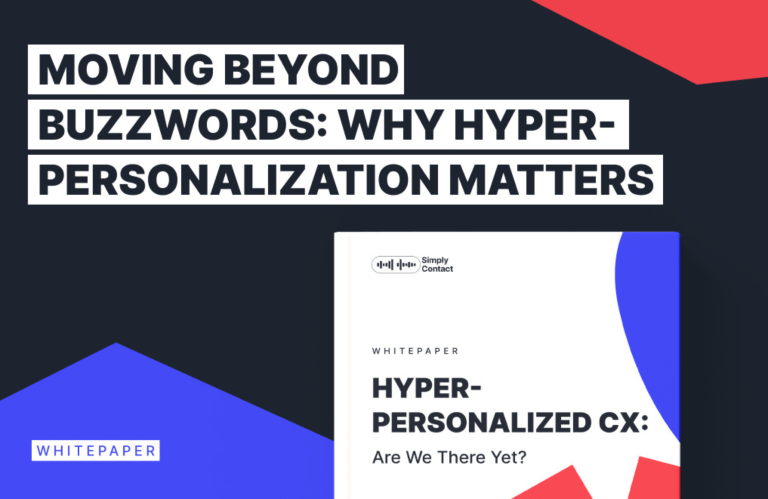By Anna Bielikova, COO at Simply Contact
Over the last few years, I’ve heard the term “hyper-personalization” mentioned at nearly every conference, roundtable, and client meeting. It has become one of those buzzwords everyone nods along to. But when you look closer, only a handful of companies are actually delivering it in practice.
This gap between ambition and reality is what inspired us to create our new whitepaper: Hyper-Personalized Customer Experience: From Promise to Practice. It’s not about adding to the noise—it’s about giving CX and support leaders a clear, honest look at where we are as an industry, and how we can move forward.
The reality check
Let’s start with a striking contrast: 80% of brands claim they deliver personalized experiences, but only 24% of CX practitioners believe those experiences are truly personalized. That statistic alone says a lot about where the challenges lie.
At the heart of the problem is data. Many organizations have customer data, but it’s scattered, inconsistent, or simply underutilized. On top of that, hyper-personalization requires empathy—something that can’t be automated, no matter how advanced AI becomes.
Conversations with experts
To bring more depth to the discussion, we interviewed industry leaders including Adrian Swinscoe, Katie Stabler, Jason Noble, Rosebella Abok, Gregorio Uglioni, and Stefan Osthaus.
Together, we explored:
- The real difference between personalization and hyper-personalization
- Why many well-intentioned efforts end up missing the mark
- How technology and people can complement one another
- And where businesses must draw the ethical line when handling customer data
Their perspectives challenged us and, I believe, will challenge many readers too.
What you’ll discover in the whitepaper
The whitepaper is divided into eight sections, each tackling a critical element of hyper-personalization:
- Closing the maturity gap. Why so many brands are stuck at the “personalization lite” stage.
- Technology’s role. AI, analytics, and customer data platforms are promising—but 57% of marketers still cite inconsistent data as their biggest roadblock.
- Rethinking metrics. CSAT and NPS don’t capture the emotional impact of tailored experiences. We highlight measures like behavioral loyalty, outcome relevance, and customer lifetime value.
The BPO shift. Outsourcing is no longer about scale alone. Partners like us are expected to deliver insights, context, and the “last mile” of personalization. As Gregorio Uglioni rightly said: “If the model says one thing but the agent can’t personalize how they deliver it, it won’t feel personal at all.” - Ethics and empathy. Forty-eight percent of customers are open to sharing data for better service, but more than half worry about misuse. We show how to build trust instead of eroding it.
A continuous journey
One of my firm beliefs is that hyper-personalization isn’t something you “achieve” once and for all. It’s a journey of constant improvement—from small steps like micro-personalization to long-term structural changes in how teams work with data and with each other.
To support that journey, we’ve included two practical frameworks: Adrian Swinscoe’s “Three S’s of personalization” and Stefan Osthaus’ model for sustainable CX. These are tools leaders can take back to their teams right away.
An invitation
This whitepaper is for anyone shaping the future of customer experience—CX leaders, marketers, operations executives, and BPO partners alike. My hope is that it sparks new ideas and conversations about how we can all move beyond buzzwords and create customer journeys that feel truly personal.
Download the whitepaper on Hyper-Personalized Customer Experience here and join us in rethinking what “personal” really means in CX.





